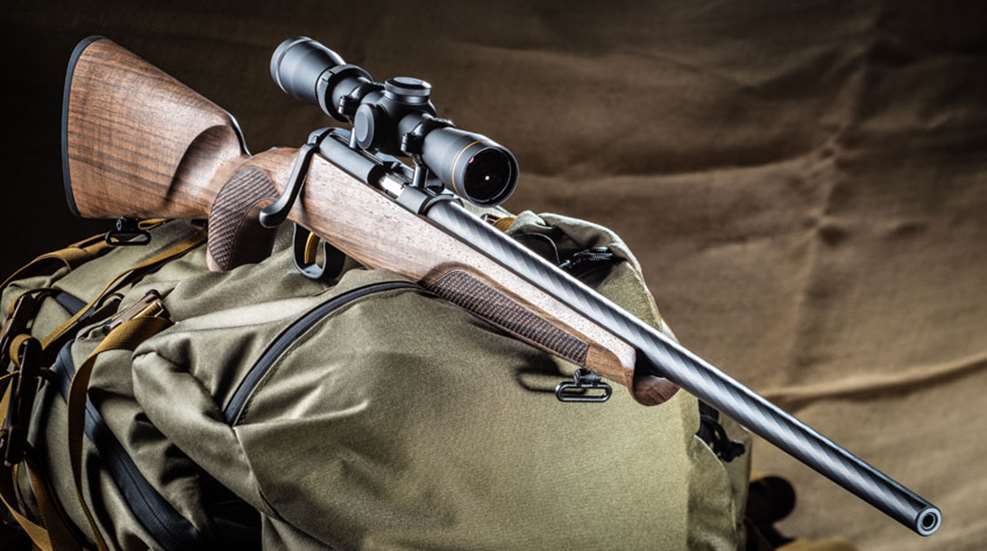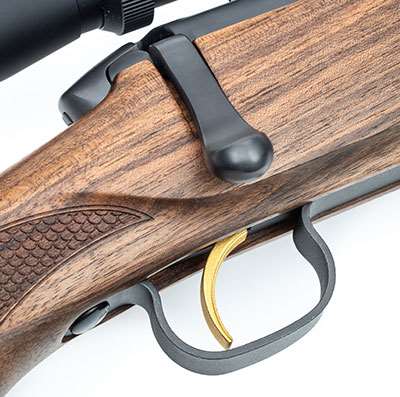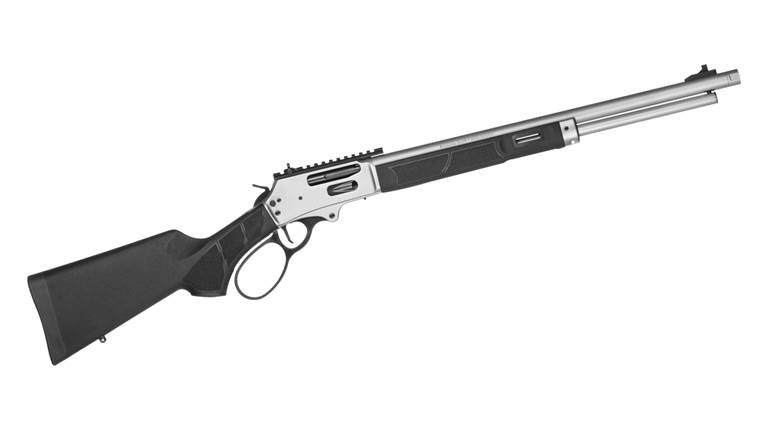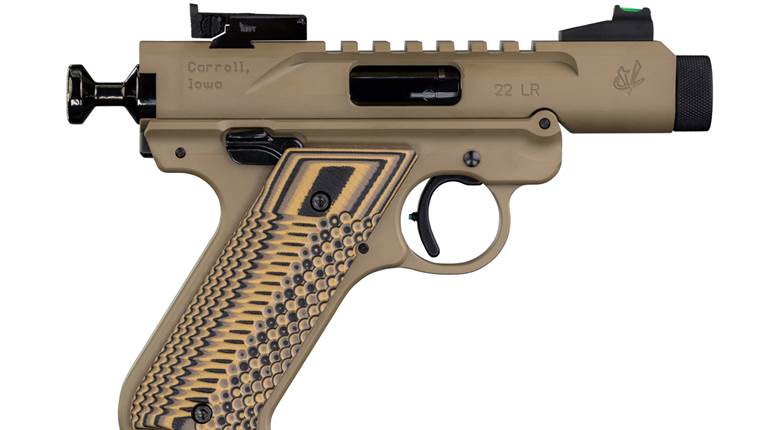
With its butterknife bolt handle, schnabel fore-end and visible evidence of hammer-forged barrel construction, the Steyr Zephyr II, shown here with a Leupold VX-2 2-7X 28 mm scope, is a high-class magnum rimfire rifle with a decidedly European flair.
Earlier this year, Steyr Mannlicher of Austria re-introduced an old favorite: the Zephyr II, a bolt-action rifle for the discriminating small-game hunter. Originally produced from 1955 to 1971, the updated Zephyr possesses new lines and an improved action, and it builds upon the legacy of its predecessor with a foundation of quality and well-executed craftsmanship. Chambered for rimfire cartridges, the gun is available in .22 Long Rifle, .22 WMR and .17 HMR. For testing, we received a .22 WMR-chambered sample.

While there is no shortage of rimfire bolt-guns, the Steyr is aimed at the upper end of the rimfire sporter market, having been created for the individual who prioritizes quality and pride of ownership over cost.
Looking at the Zephyr II’s stock it becomes immediately apparent that this is not an entry-level gun. Made from European walnut, the stock features a Bavarian cheekpiece, laser-cut fish-scale-style checkering and a schnabel fore-end. The metal is ferritic-nitrocarburized in a non-reflective and protective finish that Steyr refers to as Mannox. The pistol grip features an inset Steyr logo, and there’s a 5/8" rubber buttpad that gives the Zephyr II a considerable length of pull measuring 145⁄8". Ergonomics play an important part in the Zephyr II’s appeal, and its slim wrist, comfortable cheekpiece and slender fore-end give the rifle excellent handling characteristics.
The Zephyr II’s 19.7" medium-weight barrel is cold-hammer-forged. It is rifled with eight grooves, and the twist rate is 1:15.75". To protect the rifling, the gun is given a recessed target crown. The Zephyr II possesses Steyr’s signature butterknife-style bolt handle. Besides looking good, the contours of the handle allow the bolt, along with its short throw (just 1.65"), to be manipulated rapidly. The bolt cocks on opening and does not require a great deal of effort to operate. When the action is cocked, a small pin protrudes from the rear of the bolt cap where it can be seen and felt. Twin extractors are used for positive extraction and smooth cycling.

On the left side of the receiver is a bolt-release lever, and depressing it while moving the bolt to the rear allows it to be removed from the receiver. The Zephyr II uses a two-position, tang-mounted safety. Pulled to the rear it makes the rifle safe, and a white dot is visible. The rifle should be loaded and unloaded with the safety engaged. Pushing it forward makes the gun ready to fire and exposes a red dot. The rifle uses a polymer, five-round magazine. One of the very few criticisms we had of the Zephyr II is that the magazine release is just a nub of exposed spring steel in front of the magazine, and, on more than one occasion, we inadvertently engaged the release while firing from the bench.

Steyr outfits the rifle with a two-stage trigger, and factory-tunes it for a light and crisp release. Our test sample’s trigger broke right at 2 lbs. The manual cautions against trying to adjust the trigger and states that any trigger work must be done at the factory by a qualified technician. The trigger’s gold plating adds to the gun’s aristocratic persona.
Steyr ships the rifle without any sights, realizing that most will want to take advantage of its inherent accuracy by adding an optic. The Zephyr II’s receiver top has an 11 mm dovetail—not a terribly common dimension by American standards—and it took a little bit of searching on our part to find compatible ring mounts. Leupold sent us 1" medium ring mounts that worked perfectly. One evaluator supplied his Leupold VX-2, 2-7X 28 mm Ultralight scope for function and accuracy testing. Its compact size and light weight were a perfect match for the lightweight Zephyr II.
American Rifleman protocol for rimfire rifle testing is to fire 10 shots per group at a distance of 50 yds. We fired five groups for each of the three ammunitions used, with the results shown in the accompanying table. The Zephyr II’s stock is relatively straight, with just 11⁄8" drop at the comb and 13⁄8" at the heel. Despite the gun’s light weight, we were able to hold the duplex reticle centered on our 2" aiming point while adding pressure to the trigger until the shot broke.

Our groups were well-rounded and did not exhibit vertical or horizontal stringing. The single best 10-shot group measured just 0.66" and was produced by CCI’s 40-gr. Maxi-Mag hollow points. The average group size for all three loads was well under an inch. All three of these loads would be very effective for hunting small game.
The Steyr Mannlicher Zephyr II is a beautiful rifle that possesses a fine degree of accuracy. It displays typical Steyr craftsmanship, attention to detail, and exemplary fit and finish. At a suggested price of $995, the Zephyr II is sure to find a home with discerning riflemen who place value on both performance and aesthetics.






































